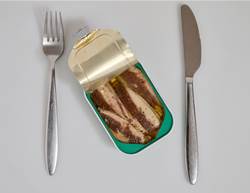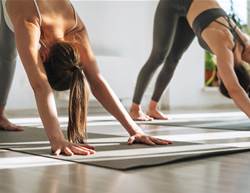Getting some kilometres in on your feet delivers serious benefits. Running can lower blood sugar, boost cardiovascular health, build muscle, support healthy bones and ease stress. Despite what you may have heard, running can actually be good for your knees.
But is it better to run on a treadmill or outdoors? We asked exercise physiologist and run coach Kaleigh Ray for insight. Ray, who holds a master’s in biomechanics, says there’s no need to pick a side. “Runners shouldn’t silo themselves into only outdoor running or treadmill running. A mixture is best because it helps you adapt to multiple environments.”
Here’s everything to know about treadmill running vs. outdoor running.
Treadmill running pros and cons
Pro: You don’t have to worry about weather
“Treadmill running reduces the variables you have to contend with, so you don’t have to worry about the weather, wind, carrying water and nutrition or the terrain,” says Ray. That makes treadmills ideal for pace-based sessions because fewer outside factors will pull you off target.
Pro: Eases certain safety concerns
A treadmill can be a better choice if outdoor safety is an issue. Traffic, poor lighting, uneven surfaces or wildlife are off the table when you’re running indoors, notes Ray.
Pro: You can simulate flat or hilly terrain
If you live somewhere pancake-flat but you’re eyeing a hilly race, the incline buttons are your friend. Likewise, if your neighbourhood is all climbs and you want a steady flat run, a treadmill makes it possible.
Pro: More shock absorption
Most treadmills have cushioned decks that absorb impact better than pavement. This can help you run a little farther or faster in a controlled setting and makes the return from injury feel safer for many runners.
Con: It can be dull
Plenty of runners find treadmill time boring. You miss the social buzz of a group run and the simple joy of moving through a real landscape.
Con: Can leave you underprepared for outdoor events
A perfectly controlled belt doesn’t mimic wind, uneven paths or changing weather. Runners who train only on a treadmill often slow down outside thanks to air resistance and variable terrain.
Con: Time limits can cramp long runs
Many gyms cap treadmill sessions. Long-run days may require stopping and starting again, which can interrupt rhythm and pacing.
Con: Sprinting can feel awkward
Some treadmills don’t go fast enough for true all-out efforts. You can also feel cramped near the motor cover or console and fiddling with speed controls mid-sprint isn’t ideal.
Outdoor running pros and cons
Pro: A bigger mood lift
Running outside often boosts mood more than the treadmill. Reviews show outdoor sessions leave people feeling more energised, less anxious and less down.
Pro: Essential for race prep
Training on the same surface you’ll race on — road or trail — helps your body adapt. You’ll also acclimatise to heat, wind or rain so race day feels familiar.
Pro: May better support fat loss
Some research suggests outdoor running can drive a greater drop in body fat and stronger leg muscle gains than treadmill work.
Con: Harder to schedule
If you need to stay close to kids, you’re on call or you can’t get to a safe route, fitting an outdoor run into the day can be tricky.
Con: Limited toilet access
If you have gut issues or you’re trialling new fuel, not having a bathroom nearby can be stressful.
Con: Risk of getting lost
New routes are fun but a wrong turn can land you in heavy traffic or an area that doesn’t feel safe.
When to hop on the treadmill
If a treadmill is the only way you’ll run today, that’s the right choice. Use it when weather, daylight, safety or childcare would otherwise stop you. It’s also ideal for goals built around one metric—nailing a set pace, holding a heart rate zone or ticking off a precise distance—because the environment is controlled and you can dial in the numbers. If running outside feels unsafe, choose the treadmill. The performance gap isn’t big enough to justify taking risks.
When to head outdoors
If you’re training for an event, get outside as often as you can. You’ll adapt to the surface you’ll race on, the hills, the wind and the heat or cold. Outdoor running also teaches pacing by feel. Learning to settle into the right effort without a screen builds the intuition you’ll rely on on race day.
Do you burn more kilojoules running outdoors or running on a treadmill?
It depends. Terrain, wind, temperature, surface and how steady you hold pace all change your burn.
If you match speed and incline in both settings, you’ll usually burn a little more outdoors. You are not getting help from a cushioned deck and you are working against air resistance, so stabilising muscles do a bit more work. On a treadmill you can still equal or exceed that by using a steady incline and holding pace precisely.
For the same pace and grade, outside typically edges it. To boost kilojoules burn anywhere, add short hills or 1–3% incline, include brisk intervals, avoid holding the rails and run by effort, not just the screen.










